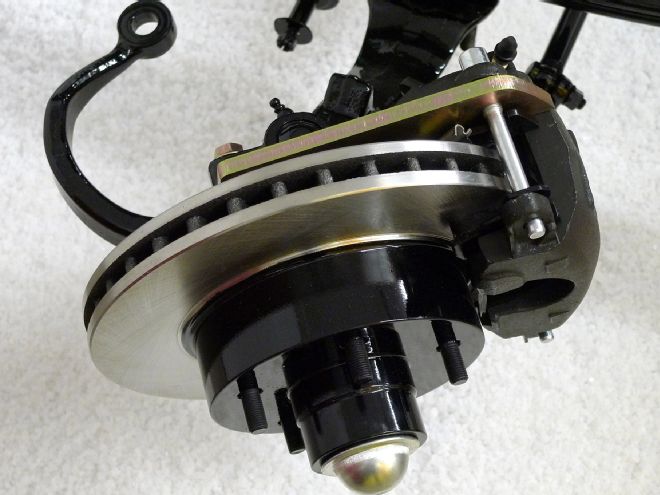
It's nice when things just fall into place. If you've been playing with old trucks long enough, you'll recall working harder for things. Here our customer/friend Danny Stinson's under-reconstruction 1955 Chevrolet 3100 second-series 1/2-ton presents another good example. While this truck won't be heavily modified, we concur that we'd prefer a five-lug bolt pattern this time around. Today the solution exists in kit form, comprised of brand-new components and it's only a phone call away. For the job at hand we've already chosen the path of least resistance. We will be taking full advantage of our aftermarket resources, but before we proceed, just so we can fully appreciate how easy we have it today, let's take a look back at the "traditional" five-lug changeover.
Once there was a time when the parts required came from wrecking yards. First you'd need a counter salesperson with an understanding of interchanges—like my own uncle, Gary Bauman. Now according to Unc, who used to sell a lot of them, the front hub and drum assembly from the 1951-54 Chevrolet passenger car was the hot-tip bolt-on five-lug conversion for 1951-59 Chevrolet and GMC 1/2-ton trucks. Of course by today's standards the braking power provided by such an antiquated setup would be marginal—even with good drums and arched-to-match shoes. Topping that, we now have availability challenges, as the supply of good, used parts has dwindled to nearly nil.
So from here let's work our way toward the technical portion of our story. For a quick then versus now comparison, we'll begin with a field trip to an old wrecking yard—my personal happy place. Afterward following advice from our trusted, personal friends at Ed Martin Garage who installs five-lug disc brake kits routinely, we'll pick up the phone and call Brothers Truck Parts. From there to further illustrate how easy we have it today, we'll tear open boxes and simply turn wrenches in successful pursuit of one less lug. The five-lug changeover is now easier than ever. Disc brakes are a nice bonus, and it's even better when things just fall into place.
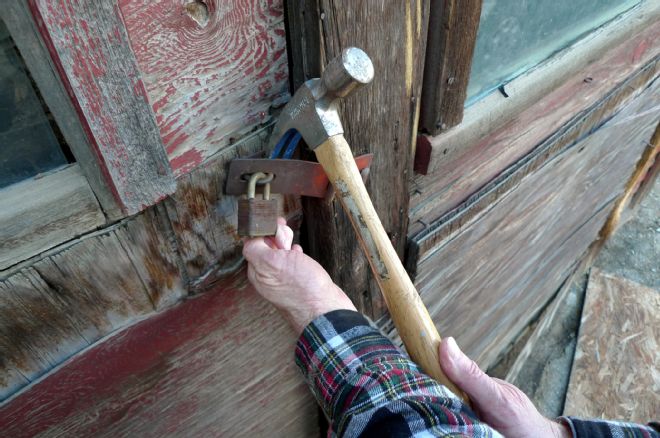
1 This is how we used to get our parts. It's been a while or two and I don't really remember which key opens this door, but if you'll hold my camera, I'll get us in—deep.
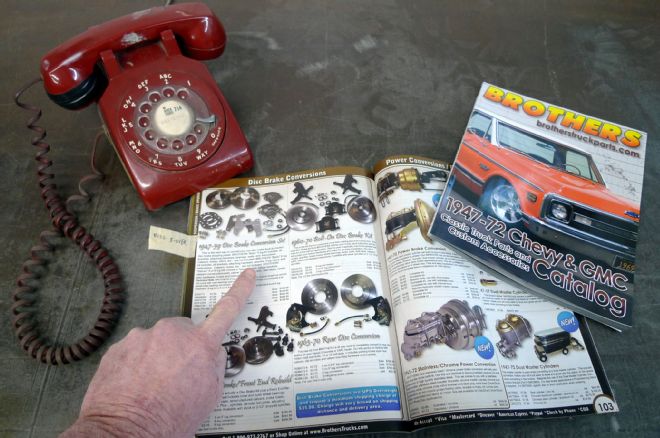
2 If walls could talk, there'd be some serious storytellin' goin' on here. It's dark and quiet in this old barn today, but I still hear phones ringing and hotlines blaring.
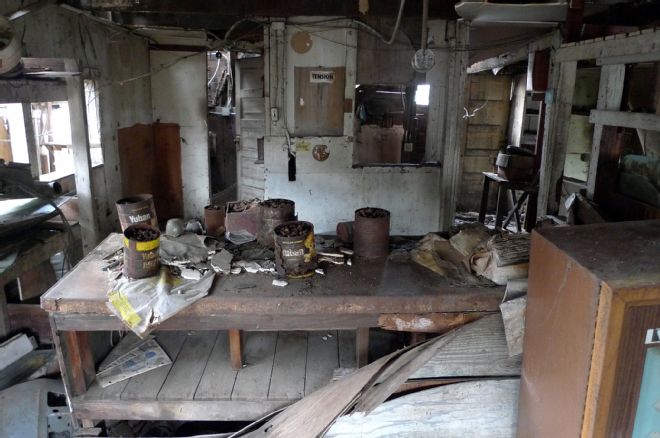
3 These days you won't find Uncle Gary behind the parts counter, but this is the exact spot where you'd purchase your five-lug changeover back in the day.
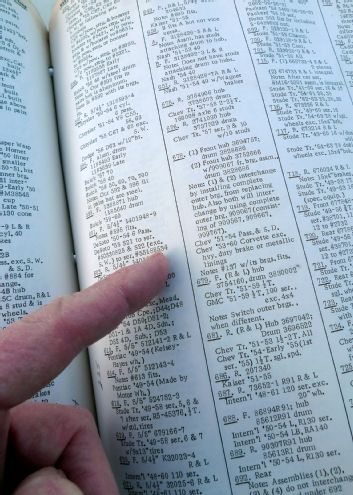
4 For the purpose of illustration, we've dusted off an old Hollander interchange manual. Now let's pay particular attention to numbers 678 and 679. While both passenger car and pickup interchanges are listed in detail, Hollander does not tell us that the two will interchange with one another. But we know—and they will.
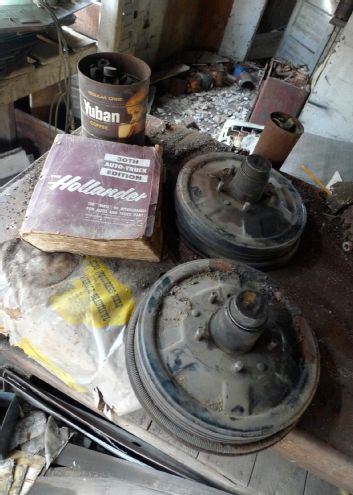
5 Here before us on the counter is the last remaining set of interchangeable Chevy passenger car hub 'n' drum assemblies—from my own personal parts stash. I've had these parts so long that I'd actually forgotten about them—and today in light of our options, they're no longer in big demand.

6 Today, even at our own shop, the five-lug changeover parts quest begins right here with a telephone call to Brothers. For our customer/friend's purposes, PN 4759DBK-5 (5-on-4.75) disc brake kit will fit the bill just fine.
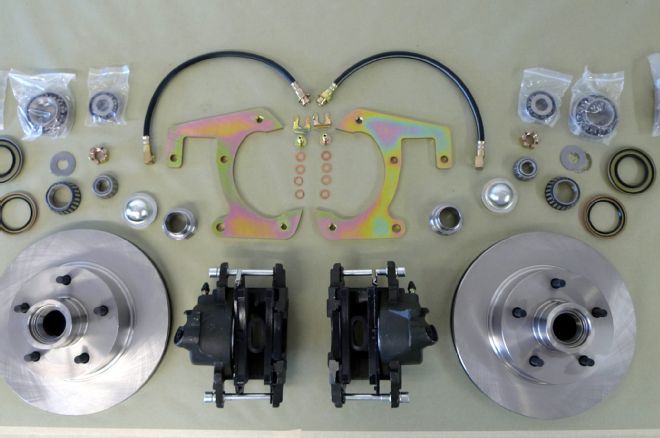
7 Our Brothers Trucks brake kit consisted of everything necessary to do the disc brake swap. At first I questioned the extra bearings, but this was my first go. The correct bearings were indeed in the mix and the proper races had already been installed for us.
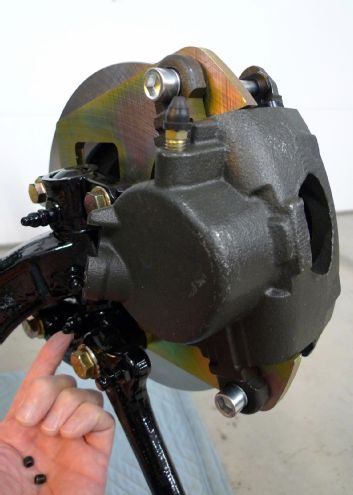
8 According to Brothers' instructions, we "may" discover clearance issues between our new caliper brackets and our spindles' existing Zerk fittings. The remedy is described in detail and 1/4-28 setscrews are provided as plugs, but lucky us—we encountered no such interference.
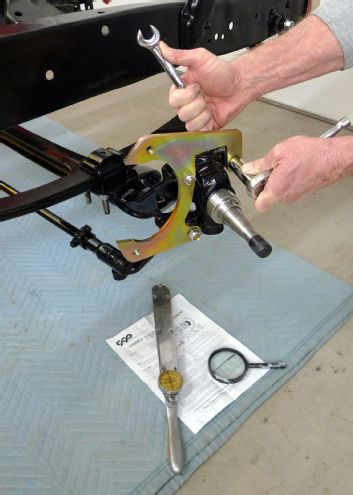
9 Once satisfied with our loosely assembled testfit of both sides, it seems appropriate to back up a tad or two and paint the non-friction surfaces of the rotors. This is just to stave off rust and since this ain't about paint, we'll not expound this step further. Let's get back to the nuts 'n' bolts.
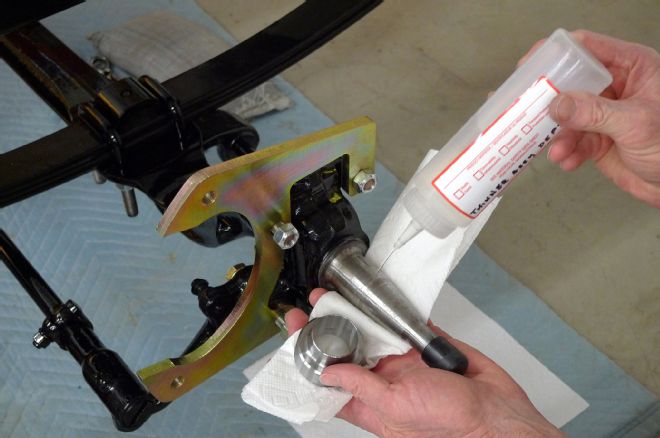
10 This kit uses bearing adapters for the inner wheel bearings. In this instance they slip over the spindles easily so we've opted to use a small amount of red Loctite between the two, as suggested in the instructions. Using what we have, California-compliant 'gun wash solvent makes a suitable pre-cleaner.
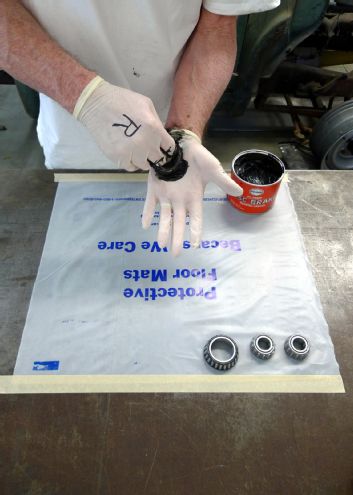
11 Being careful not to touch the surgically clean surfaces with our questionably clean fingers, a little dab'll do. Then we'll follow with a single rotation of the adapter, just to ensure even distribution of Loctite.
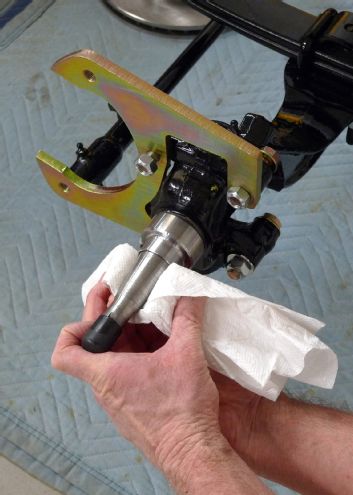
12 After wiping away a small amount of excess, we've decided to walk away and call it a day. If you choose to plow-through and continue with assembly, take care not to disturb the adapter until the Loctite has been allowed sufficient hardening time.

13 The instructions state that the calipers "may" not slide into place on their brackets due to a bump in some caliper castings. Luckily again, we encountered no such interference with no grinding required. Having already test-fit the kit, final assembly is as simple as "lefty-loosey, righty-tighty."

14 Somewhere in this shop is a nifty bearing packer, but I have trouble finding things sometimes so these bearings are packed in a more manual manner. Keeping things as clean as possible, the race-ready bearings are set on a fuzz-free surface as they await their installation.
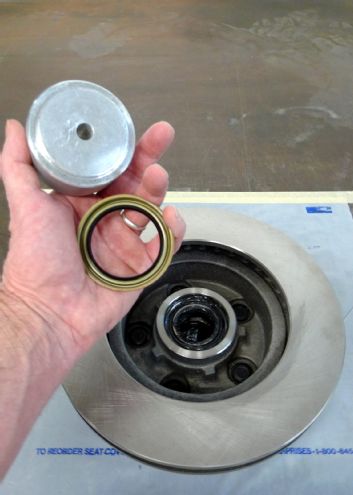
15 We do have a set of seal drivers, but it's rarely used here. Therefore, it's another one of those things I have trouble finding and I have no idea where it's currently stored. However, our well stocked scrap bin has rendered the remedy for the situation at hand.
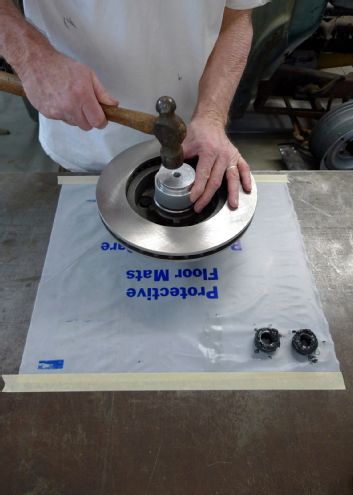
16 After a thorough cleaning, this old chunk of aluminum does the job well. It's a perfect fit for this application and instead of returning to the scrap bin it'll have a permanent place in my toolbox from here on.
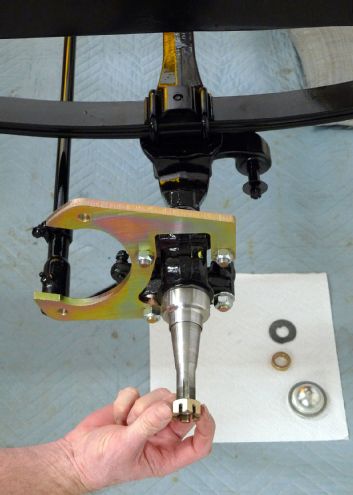
17 Our used spindles have experienced threads, but our replacement spindle nuts are brand new. It would be nice to know these threads get along before I'm stuck with my hands full of rotor. Somehow I didn't notice the bind during the previous testfit, so I've already struggled with the other side.
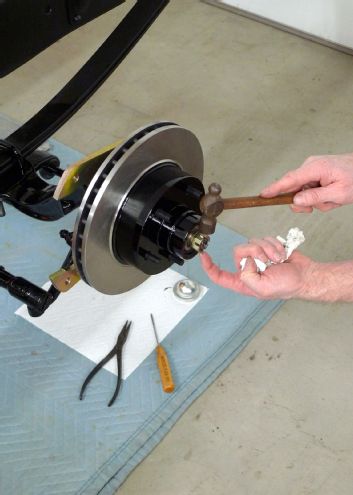
18 Final assembly is fairly straightforward, but around here it might start with something like, "Honey? Where do you keep your cotter pins?" Unfortunately Mrs. Rotten is working elsewhere today, but after a lengthy search, I've finally managed to find a couple on my own.
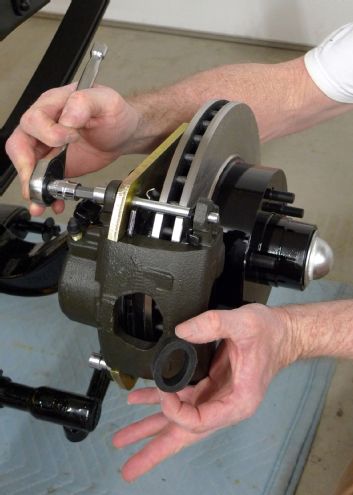
19 If you've ever painted calipers, you know they're a pain. These were flat black, straight from the bubble-wrap. The short section of rubber hose was included to keep the pads apart and in position. It cleanly self-ejected as the caliper slid into place on its bracket and I'll keep it around for next time.
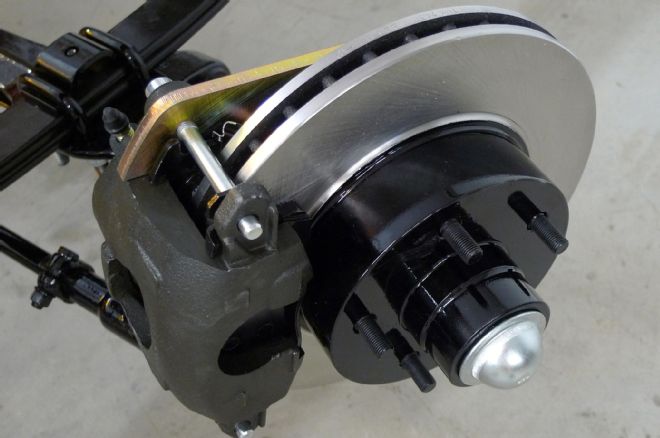
20 In retrospect, this was the easiest five-lug changeover yours truly has ever done and the truck's owner gains some stoppin' power to boot. Right now, however, I know some of y'all are thinking that this job is only half finished. What about a lug reduction for the opposite end of this truck?
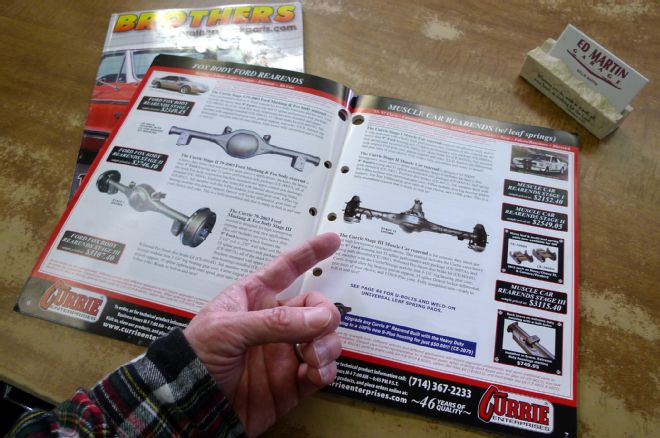
21 That too will fall into place—when we order up a new rearend from Currie Enterprises. We really do have it easy today. Once again the solution exists in kit form, comprised of brand-new components and it's only a phone call away.